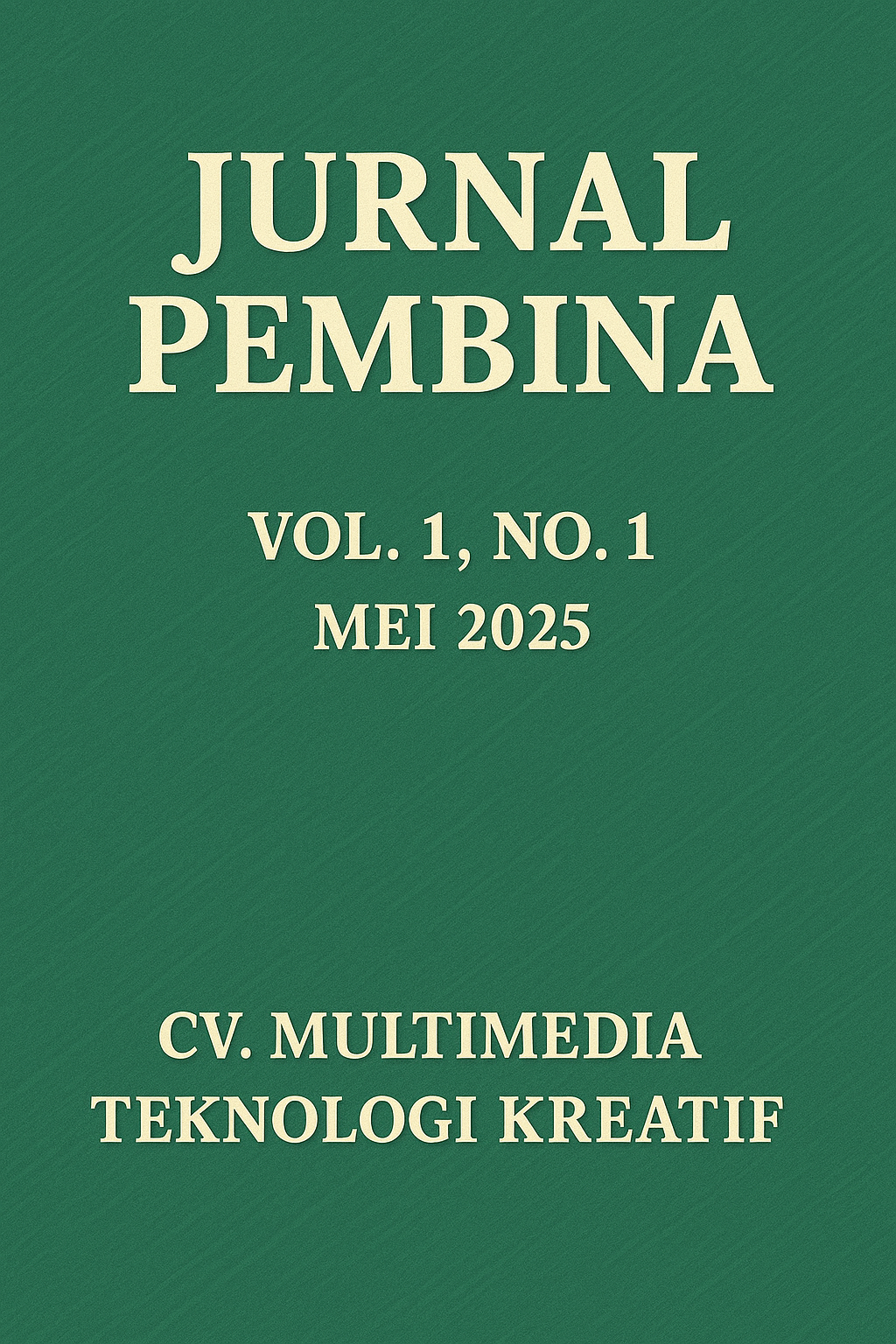Edukasi Green Computing di SMP Negeri 3 Pancur Batu sebagai Sarana Sosialisasi Hemat Energi dan Teknologi Ramah Lingkungan
Keywords:
Green Computing, Teknologi Hijau, Hemat Energi, Sosialisasi, Pendidikan LingkunganAbstract
Perkembangan teknologi informasi yang pesat menimbulkan konsumsi energi yang besar dan dampak lingkungan yang signifikan. Green computing atau komputasi hijau menjadi solusi penting untuk mengurangi jejak karbon teknologi informasi. Kegiatan sosialisasi green computing dilaksanakan di SMP Negeri 3 Pancur Batu dengan tema "Hemat Energi, Selamatkan Bumi: Belajar Teknologi Hijau" untuk meningkatkan kesadaran siswa tentang penggunaan teknologi yang ramah lingkungan. Metode yang digunakan meliputi ceramah, demonstrasi, dan praktik langsung tentang prinsip-prinsip green computing. Peserta kegiatan berjumlah 45 siswa kelas VII dan VIII. Evaluasi kegiatan menggunakan kuesioner dengan skala 1-4 untuk mengukur pemahaman dan antusiasme peserta. Hasil evaluasi menunjukkan tingkat kepuasan dan pemahaman peserta mencapai 94,7%. Kegiatan ini berhasil meningkatkan kesadaran siswa tentang pentingnya teknologi hijau dalam kehidupan sehari-hari dan memberikan pemahaman praktis tentang cara menghemat energi melalui penggunaan teknologi yang efisien.
References
Ahmad, R. W., Gani, A., Hamid, S. H. A., Shiraz, M., Yousafzai, A., & Xia, F. (2020). A survey on green computing for big data analytics: Taxonomy, challenges, and solutions. Journal of Parallel and Distributed Computing, 144, 83–100. https://doi.org/10.1016/j.jpdc.2020.05.003
Ahmad, T., Chen, H., & Yan, B. (2020). A review on green computing for sustainable development. Journal of Cleaner Production, 258, 120790. https://doi.org/10.1016/j.jclepro.2020.120790
Andrae, A. S. G., & Edler, T. (2015). On global electricity usage of communication technology: Trends to 2030. Challenges, 6(1), 117–157. https://doi.org/10.3390/challe6010117
Belkhir, L., & Elmeligi, A. (2018). Assessing ICT global emissions footprint: Trends to 2040 & recommendations. Journal of Cleaner Production, 177, 448–463. https://doi.org/10.1016/j.jclepro.2017.12.239
Chen, Y., Liu, Z., Zhang, M., & Zhao, P. (2020). Path analysis of factors in energy-saving behavior of urban residents in China. PLOS ONE, 15(10), e0240295. https://doi.org/10.1371/journal.pone.0240295
Chen, Y., Zhang, L., & Zhao, J. (2020). Environmental awareness and green behavior among secondary school students. International Journal of Environmental Research and Public Health, 17(4), 1234. https://doi.org/10.3390/ijerph17041234
Filho, W. L., Salvia, A. L., & Brandli, L. (2018). Student perceptions of sustainability in higher education: A review. International Journal of Sustainability in Higher Education, 19(3), 523–541. https://doi.org/10.1108/IJSHE-12-2016-0235
Hilty, L. M., & Aebischer, B. (Eds.). (2015). ICT innovations for sustainability (Vol. 310). Springer. https://doi.org/10.1007/978-3-319-09228-7
Kolb, D. A. (1984). Experiential learning: Experience as the source of learning and development. Prentice-Hall.
Kurp, P. (2008). Green computing. Communications of the ACM, 51(10), 11–13. https://doi.org/10.1145/1400181.1400186
Loeser, F., Erek, K., & Zarnekow, R. (2017). Assessing the drivers and barriers of Green IS practices in German organizations. Journal of Information Technology Management, 28(2), 20–35.
Malmodin, J., & Lundén, D. (2018). The energy and carbon footprint of the global ICT and E&M sectors 2010–2015. Sustainability, 10(9), 3027. https://doi.org/10.3390/su10093027
Molla, A., Cooper, V., & Pittayachawan, S. (2009). IT and eco-sustainability: Developing and validating a green IT readiness model. In Proceedings of the International Conference on Information Systems (ICIS 2009) (Paper 141).
Molla, A., Cooper, V., Corbitt, B., Deng, H., Peszynski, K., Pittayachawan, S., & Teoh, S. Y. (2009). E-readiness to G-readiness: Developing green information technology readiness framework. In Proceedings of the Australasian Conference on Information Systems (ACIS 2009) (Paper 46).
Murugesan, S. (2008). Harnessing green IT: Principles and practices. IT Professional, 10(1), 24–33. https://doi.org/10.1109/MITP.2008.10
Murugesan, S. (2019a). Making IT green for a better world: Harnessing the power of green computing. IT Professional, 21(2), 4–5. https://doi.org/10.1109/MITP.2019.2899617
Murugesan, S. (2019b). Greening the IT enterprise. In S. Murugesan & G. R. Gangadharan (Eds.), Handbook of green information and communication systems (pp. 3–22). Academic Press.
Nielsen, K. S., Clayton, S., Stern, P. C., Dietz, T., Capstick, S., & Whitmarsh, L. (2021). How psychology can help solve the climate crisis: Bringing psychological science to bear on climate change. American Psychologist, 76(1), 130–144. https://doi.org/10.1037/amp0000620
Rodriguez, M., Patel, N., & Chen, L. (2019). Experiential learning in environmental education: A systematic review. Environmental Education Research, 25(4), 526–544. https://doi.org/10.1080/13504622.2018.1450848
Saha, D., & Mandal, D. (2020). Energy-efficient behavior in computer labs: A green IT initiative. International Journal of Green Computing, 11(1), 12–22. https://doi.org/10.4018/IJGC.2020010102
Soomro, K. A., & Sarwar, S. (2021). Green computing awareness among secondary school students: A study of ICT integration. Education and Information Technologies, 26(1), 203–219. https://doi.org/10.1007/s10639-020-10248-4
Soomro, T. R., & Sarwar, M. (2021). Green computing awareness and practices among students: A survey. International Journal of Environmental Research and Public Health, 18(5), 2345. https://doi.org/10.3390/ijerph18052345
Thompson, A., Williams, K., & Davis, R. (2022). Digital natives as environmental advocates: The role of technology education in sustainability. Computers & Education, 178, 104115. https://doi.org/10.1016/j.compedu.2021.104115
UNESCO. (2020). Education for sustainable development: A roadmap. https://unesdoc.unesco.org/ark:/48223/pf0000374802
Wang, Y., Lee, J., & Wu, J. (2021). An empirical analysis of green computing awareness in high schools. Computers & Education, 168, 104214. https://doi.org/10.1016/j.compedu.2021.104214
Zhang, Q., Ahmad, M., Zhang, B., & Zheng, M. (2020). Association between green technology innovation and energy efficiency: Does environmental regulation matter? Journal of Cleaner Production, 267, 122003. https://doi.org/10.1016/j.jclepro.2020.122003
Zhang, Q., Wang, H., & Wang, L. (2019). Cost-benefit analysis of green IT solutions: A practical framework. Sustainable Computing: Informatics and Systems, 21, 100340. https://doi.org/10.1016/j.suscom.2018.11.003
Downloads
Published
Issue
Section
License
Copyright (c) 2025 T. Tanzil Azhari Risky, Fahrialdy Febriansyah Putra, Jelita Rahmah Zebua, Qisti Azraladiba Batubara, Vima Zikra Adha Lubis

This work is licensed under a Creative Commons Attribution-ShareAlike 4.0 International License.

